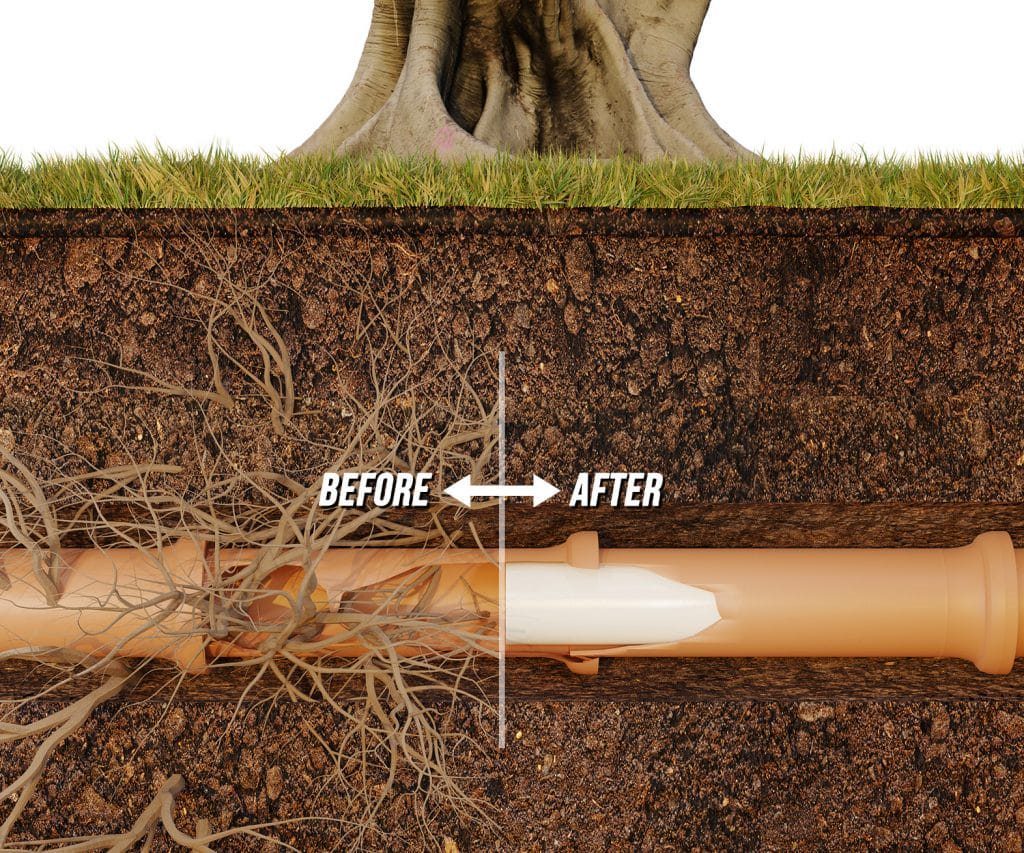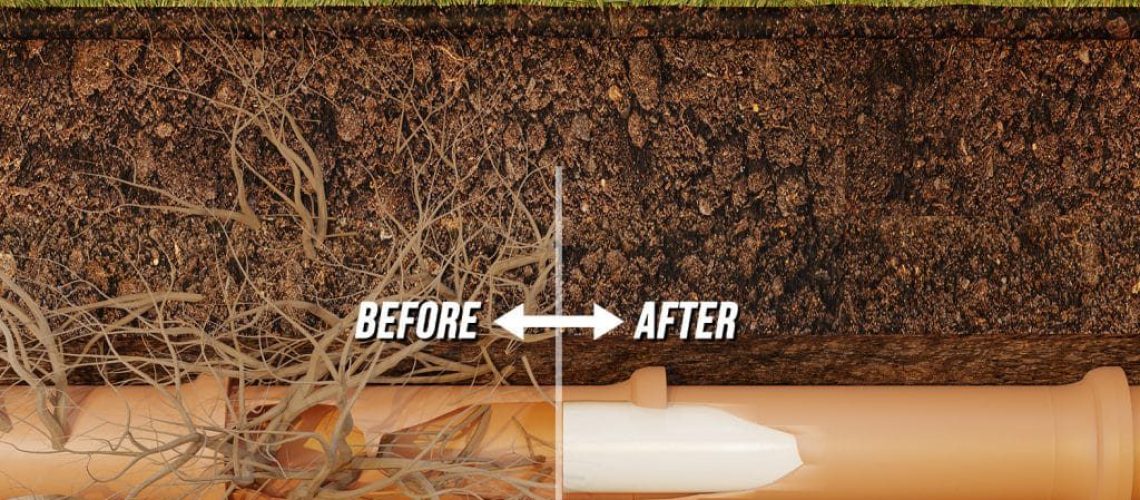Sewer repair is a service that sounds time-consuming and expensive, requiring digging and excavation of the ground covering damaged pipes. However, this isn’t always the case, as there’s an invasive technique known as trenchless sewer repair.Modern day technological advances have diminished the need for resorting to this method, starting in the 1970s.

We are talking about trenchless sewer repair.
The Brief History
1970s – The Beginning of Trenchless Sewer Repair
While plumbing has existed as both an art and science for thousands of years (specifically about 5,000 years), the following modern techniques were developed in the 20th century.
In 1970, an agricultural engineer, Eric Wood, developed the first case of trenchless pipe repair. He found that if he used another pipe within existing infrastructure, it would solve any issues he had while growing mushrooms. And while this is on a small scale, it became the prototype for “Cured-In-Place-Piping”, or CIPP.
CIPP
Cured-In-Place-Piping is a technique that is accomplished by supporting the damaged pipe from within. After locating the damaged pipe, plumbers insert a flexible liner into either the side sewer line or the main sewer line. They then inflate the liner to match the diameter of the original pipe and cure it in place, enhancing the structural integrity of that area.
This strategy applies in situations where the pipe has cracks and is leaking sewage, but the overall structure remains relatively sound. This made way to discover methods for repairing pipes with more severe damage later in this decade of improvements!
Pipe Bursting
In the mid-1970s, innovators developed another trenchless technique. The UK’s cast iron pipes required replacement or repair due to cracks and damages accumulated over time. Opting for the conventional method of excavating the pipes for replacement would have incurred significant expenses, necessitating the search for an alternative solution.
This is where “Pipe Bursting” comes in. If the current pipe has significant damage and cannot be repaired reliably using CIPP, then this method becomes the next best alternative.
A new, sturdy pipe is fitted through the old damaged one, and this results in the old pipe breaking apart or bursting. This is useful for repairing pipes with severe damage, and a strong new pipe takes the place of the old one without having to disrupt as much of the system or area surrounding the damaged pipe.
How Do I Know I Need Trenchless Sewer Repair?
Ultimately, that requires sewer specialists to diagnose and locate the source of the problem. There are several steps in this process. Let’s begin with identifying symptoms to watch for that may indicate the need for repair in your side sewer line or main sewer line.
Symptoms of Sewer Line Problems:
- Clogs and Back Ups: A very common indicator that something is wrong with your pipes is when your water system is not flushing as it should. This is a sign to call a reliable plumbing or sewer company to identify the issue. A simple hydro jetting service can resolve certain blockages. Hydro jetting will flush out anything preventing proper water flow, resulting in backing up and affecting your sinks, toilets, or showers. If you hear “gurgling” sounds in your building after flushing the toilet, it indicates cracks and breakages in the sewer lines, which generate air bubbles in the pipes that require repair.
- Sewage Smells: Persistent backups and drainage problems can lead to unpleasant odors inside and outside your home. This situation can arise if the side or main sewer has cracks, damages and there is a leakage into the ground, In such cases, sewage doesn’t properly drain and exit your plumbing system to the city septic tank. If this occurs, it’s essential to call a professional to diagnose the issue.
- Environmental Effects: Over time, growing trees around the building stretch their root systems which can break through the pipes, causing cracks and contributing to the above symptoms.
- Old Pipes: When pipes have not received proper maintenance or have been neglected for several decades, the material undergoes wear and tear from usage, resulting in damages. This is another case when trenchless sewer repair can remediate the problem – or if the system and pipes are very old, trench sewer repair may need to be the solution.
What is the Process for Trenchless Sewer Repair?
When you call a reliable sewer repair company, they will send out a licensed technician to investigate.
First: During an initial inspection, a plumber will insert a specialized camera into the pipeline to locate the source of the issue. This allows us to find whether there is damage, the extent of damage, and determine the method of repair.
Second: After completing the diagnosis, the plumbing company informs the customer with a quote for the costs. In many cases, we can resolve problems using the trenchless sewer repair techniques mentioned earlier. If there is no damage at all, and the pipes are strong, we will opt for hydro jetting as the preferred method.
Third: The administration of repairs. Since trenchless sewer line repairs are non- or minimally invasive, technicians can complete them within the day. This approach keeps repair costs low and enables you to return to your daily routine after the fixing process.
Fourth: There will be a final inspection using the same specialized pipe-viewing camera that located the issue in step one. This is to ensure that the repairs are successful and reduce the chances of having to do a repeat visit.
Final Thoughts on Trenchless Sewer Repair
Now that you are aware of the processes and the history of trenchless sewer line repair, you can see the benefits it has! When you do find that there are strange sounds, water backups, sewage smells, or other issues within your building, call a licensed professional to inspect and diagnose the problem.
In the greater Seattle area, The Pipe Dr has the expertise to solve your sewer line problems! We are a Registered Side Sewer Contractor (RSSC) company in the greater Seattle area for over 16 years and running, and we offer 24/7 support in case of emergencies.

